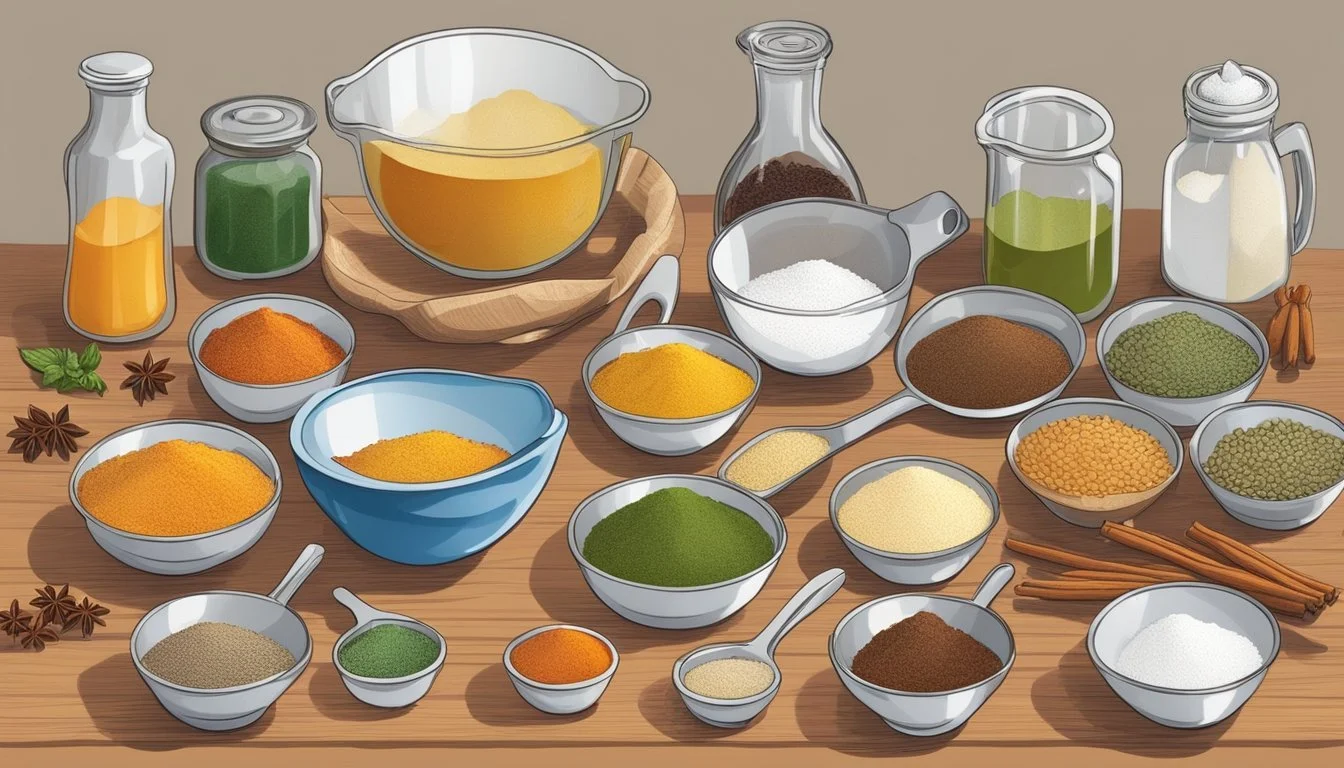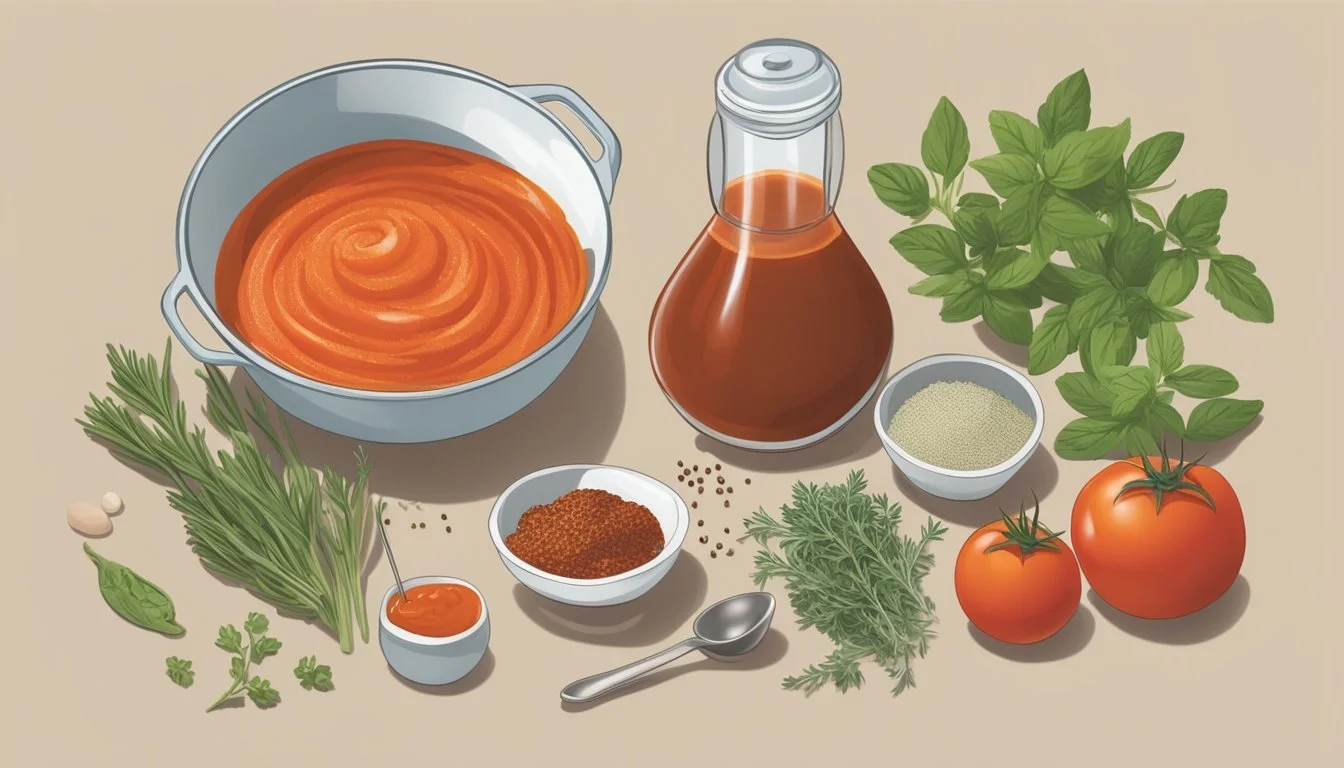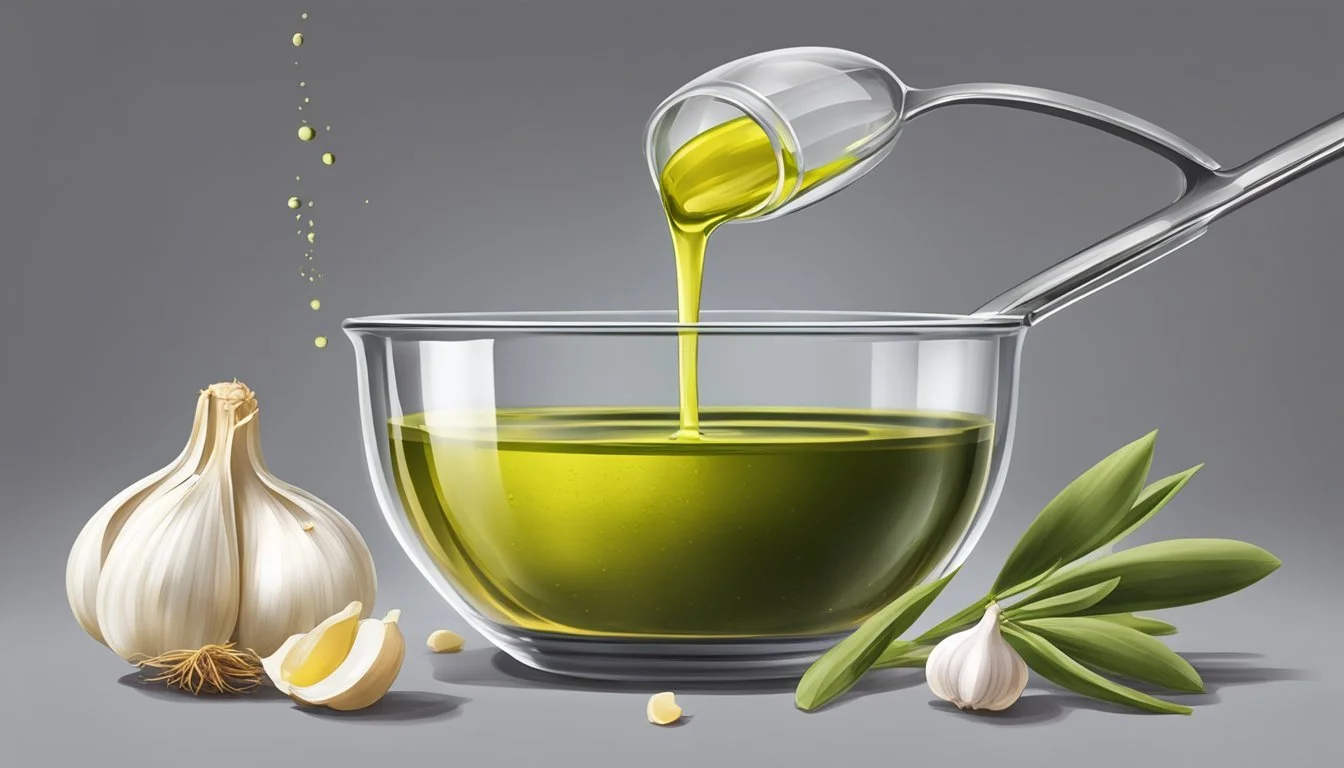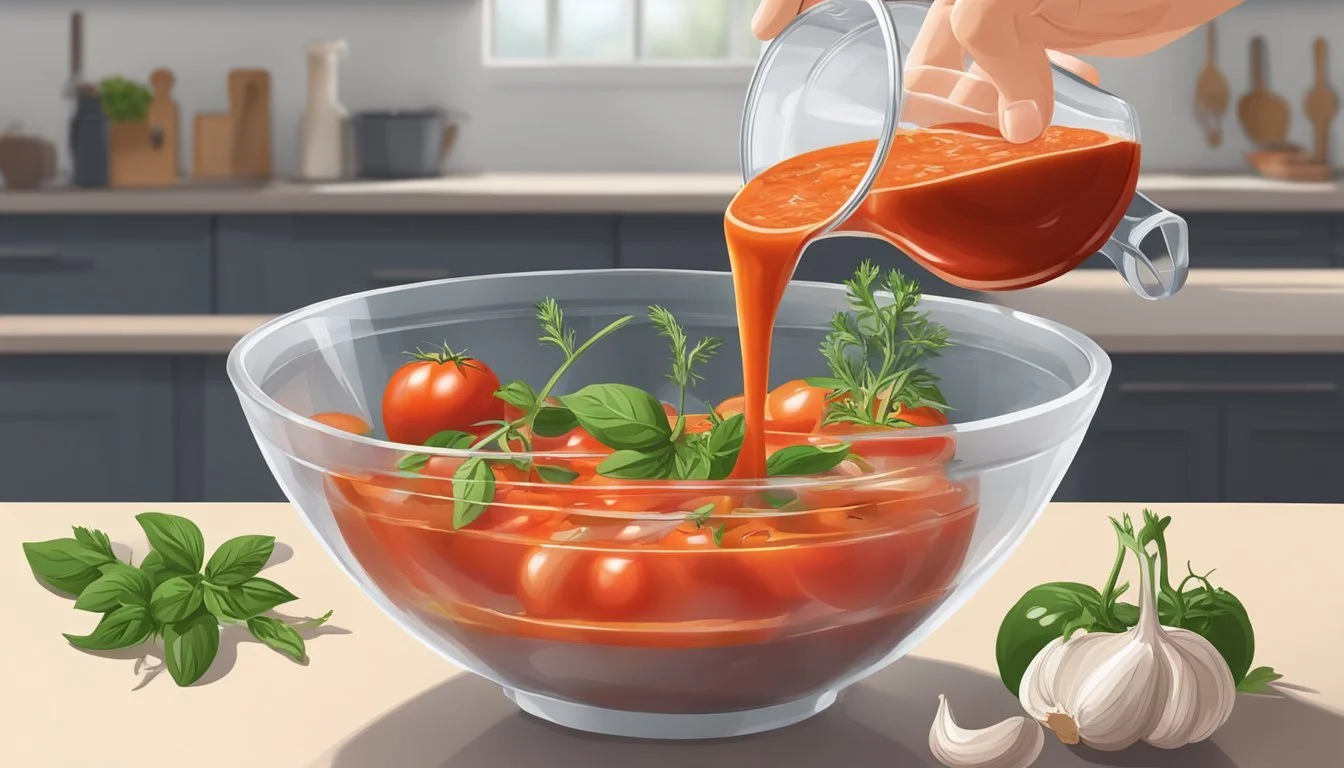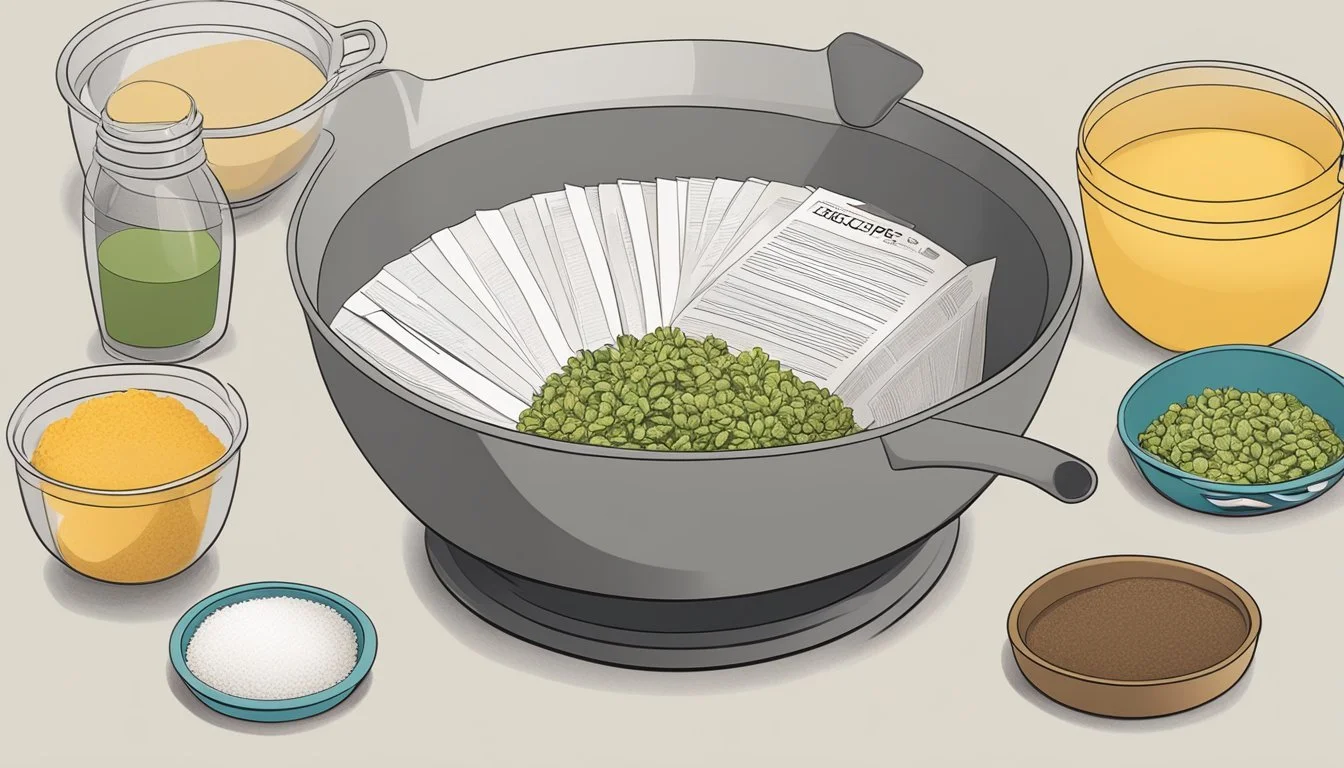How to Measure Ingredients for a Homemade Sauce Recipe
Precision and Simplicity
Measuring ingredients accurately is crucial when creating a homemade sauce. The precision in measurement ensures that the flavors are balanced, and the texture is just right. For the home cook, constructing a sauce from scratch offers a chance to personalize taste and adapt consistency to one's preference. The process begins by gathering all necessary components, including liquid elements like water or broth, thickening agents such as tomato paste or flour, and a spectrum of seasonings to build depth and complexity.
The tools used for measuring can impact the outcome of the sauce. A set of dry measuring cups is ideal for solid ingredients like chopped onions or herbs, while liquid measuring cups are designed to accurately gauge volumes of water, oil, or broth. A kitchen scale may also be employed for increased precision, particularly when following a recipe where ingredient weights are specified.
In addition, when crafting a sauce, one must consider the impact of cooking time and temperature on the reduction and concentration of flavors. A simmering technique allows for ingredients to meld harmoniously, while a boil might be used initially to bring the components together quickly. Regardless of the chosen method, it's the meticulous attention to the measurement of ingredients that lays the foundation for a successful homemade sauce.
Essential Tools and Equipment
When preparing homemade sauces, the accuracy of measuring ingredients can significantly impact the final taste. It's crucial to equip the kitchen with the right tools for precise measurements.
Measuring Basics
To achieve consistent results in sauce-making, chefs should first master the use of basic measuring tools. Liquid measuring cups are best for oils, water, and vinegars, as they allow for a clear reading at eye level. Dry measuring cups should be reserved for ingredients like flour and sugar, ensuring a level top without overpacking.
Digital Scales and Measuring Spoons
For precision, digital scales are indispensable. They can measure ingredients down to the gram, essential for delicate sauces where balance is key. A complete set of measuring spoons is also necessary for small quantities of spices and seasonings. To use, one simply fills the spoon and levels it off for an accurate measure.
Digital Scale: Accurate to the gram
Measuring Spoons: Set from 1/4 teaspoon to 1 tablespoon
Using a Blender for Purées
When a sauce recipe calls for smooth purées, a blender proves to be an essential tool. It can seamlessly integrate a variety of ingredients, such as tomatoes for marinara or roasted peppers for a coulis, into a silky, well-emulsified sauce. Quality blenders offer the power to handle even the toughest ingredients without spluttering or overheating.
Blender: For seamless integration of ingredients into a smooth purée
Example Usage: Tomatoes for marinara sauce, roasted peppers for coulis
Ingredients Selection
The foundation of a great homemade sauce lies in the selection of high-quality ingredients. Understanding the characteristics of each component is essential to enhance the flavor and texture of the final product.
Choosing High-Quality Tomatoes
Tomatoes are the heart of many sauces, and their quality is paramount. San Marzano tomatoes are often favored for their sweet flavor and low acidity, making them a perfect base. When selecting tomatoes, one should look for bright, firm fruits with a rich red color. Fresh tomatoes should be ripe but not overripe, to prevent a watery sauce outcome.
Fresh Herbs Versus Dried Herbs
Herbs add depth and complexity to sauces. Fresh basil, oregano, and parsley often provide a more vibrant flavor compared to their dried counterparts. Fresh herbs should be lush, green, and free from blemishes. However, dried herbs can be more concentrated and are suitable for longer cooking sauces, though they should be used sparingly to avoid overpowering other flavors.
The Role of Olive Oil and Butter
Extra virgin olive oil is praised for its ability to carry flavors and its health benefits. It should be fragrant and taste like the olives from which it was pressed. In contrast, butter adds richness and can help to mellow out the acidity of tomatoes. Unsalted butter is preferred as it allows for better control of the sauce's seasoning.
Creating the Sauce Base
The foundation of a great homemade sauce starts with a solid base, often comprising sautéed onions and garlic, the balance of acidity and sweetness, and the incorporation of tomato paste and sauce. Properly measuring these key ingredients is critical for a sauce with the perfect flavor and texture.
Sauteing Onions and Garlic
To begin, one needs to finely dice one medium onion and mince two cloves of garlic. These shall be sautéed on medium heat with a measure of 2 tablespoons of olive oil until the onion is translucent and the garlic is aromatic — typically taking about 3-4 minutes. It's important to stir frequently to avoid burning, as this can impart a bitter taste to the sauce.
Balancing Acidity and Sweetness
Balancing the acid from tomatoes is crucial for a well-rounded sauce. This can be achieved by adding a small amount of sugar. One starts with 1 teaspoon of sugar, tasting and adjusting as needed. The goal is a sauce where neither the tang of the tomatoes nor the sweetness overwhelms, but rather complements one another.
Incorporating Tomato Paste and Sauce
Finally, stirring in 2 tablespoons of tomato paste enhances the sauce's depth of flavor and color. Then, one 28-ounce can of tomato sauce should be added. Both ingredients should be measured precisely and combined thoroughly with the sautéed onions and garlic, simmered on low heat to marry the flavors, usually over the course of 30-40 minutes.
Seasoning the Sauce
Proper seasoning is essential for enhancing the flavor of any homemade sauce. Measuring ingredients accurately ensures that the sauce achieves a harmonious balance of tastes.
Adding Salt, Pepper, and Spices
When preparing a sauce, one begins with salt and pepper, which are the foundational elements of seasoning. It's best to use kosher salt for its pure flavor and easier measurement. One should start with small amounts, such as a 1/4 teaspoon of kosher salt per cup of sauce, and adjust from there. Black pepper is best added freshly ground, to taste, often starting with just a pinch.
For spices, both dried and fresh can be used to impart deeper complexity. The key is to know the potency of each and to measure carefully:
1 teaspoon of dried spices (powdered or whole)
1 tablespoon of fresh herbs (finely chopped)
Here's a basic guide for common spices and seasonings:
Spice/Herb Measurement Notes Italian seasoning 1 teaspoon Blend of dried herbs Garlic powder 1/2 teaspoon Provides a milder flavor than fresh garlic Crushed red pepper 1/4 teaspoon Adjust for desired heat level Fresh parsley 1 tablespoon Adds freshness and color to the sauce
Reaching the Desired Flavor Profile
After the initial seasoning, the sauce must be tasted and seasons adjusted to reach the desired flavor profile. One monitors the levels of saltiness and spiciness, ensuring they complement each other without overwhelming the sauce's primary flavors.
If the sauce's flavor is too intense, it can often be balanced with a small amount of sweetness, such as a teaspoon of sugar. Conversely, if the sauce tastes flat or lacks depth, consider adding a pinch more salt or a dash of Worcestershire sauce for umami richness.
It’s crucial to remember that seasonings should be added incrementally and tasted frequently. Seasonings have different intensities and the sauce’s flavor can change with cooking time.
Cooking Techniques
In crafting homemade sauce recipes, specific cooking techniques are vital to perfect the flavor and consistency. Utilizing simmering, thickening, and slow cooking approaches are essential for sauce mastery.
Simmering to Perfection
Simmering is a gentle, slow cooking process where small bubbles intermittently rise to the surface. For sauces, maintaining a simmer rather than a boil allows ingredients to meld together and flavors to develop without the risk of burning or separating. One provides heat just enough to see consistent but moderate bubble activity.
Thickening and Reducing the Sauce
Thickening a sauce can be achieved by reducing it, which involves simmering the sauce to evaporate excess water, intensifying flavors and thickening the texture. Another method includes adding thickeners like butter or flour. One must stir frequently to prevent the ingredients from sticking to the bottom and to ensure an even consistency.
Utilizing a Slow Cooker
A slow cooker provides an even, low-temperature cooking environment perfect for sauces needing long hours to develop deep flavors. It's especially effective for tomato-based sauces (What wine goes well with tomato-based sauces?) and allows one to simply combine all ingredients and let them cook over several hours. A lid's presence ensures that moisture is retained, often eliminating the need for frequent stirring.
Enriching the Sauce
When constructing the foundation of a sauce, chefs have various options to elevate the dish's complexity and flavor profile. From the savory depth added by cheeses to the richness imparted by proteins and the subtle nuances introduced through wines and creams, each component plays a crucial role in creating a well-rounded sauce.
Incorporating Cheeses
Cheese imparts a creamy texture and a deeply satisfying taste to sauces. Parmesan cheese is particularly favored for its ability to infuse a salty, nutty essence. When adding cheese like Parmesan, one should:
Grate the cheese finely to ensure it melts evenly without clumping.
Stir in the cheese at the end of cooking on low heat to avoid separation.
Adding Meat for Protein
Meat, such as beef, adds both a nutrient boost and enhanced flavor to sauces. When incorporating beef as a protein, it's best to:
Brown the meat separately before adding it to the sauce to achieve a caramelized flavor.
Drain excess fat to maintain a desirable consistency in the sauce.
Using Wine or Cream for Complexity
Wine adds acidity and complexity, while cream lends a luxurious, velvety texture. To utilize these effectively:
Deglaze the pan with wine after cooking aromatics to lift the flavorful fond (caramelized bits).
Simmer the sauce gently after adding wine to cook off the alcohol.
For cream sauces:
Whisk in cream slowly to avoid curdling.
Heat through but do not boil, as high heat can cause the cream to separate.
Storing and Preserving
When making homemade sauces, proper storage techniques are essential to maintain freshness and flavor. Crafting the ideal preservation routine ensures sauces remain delicious and safe for consumption either from the fridge or after being frozen or canned.
Freezing and Defrosting Practices
Freezing is ideal for extending the shelf life of leftover sauces. To freeze homemade sauces, one should:
Let the sauce cool completely to avoid lowering the freezer's temperature.
Pour the sauce into freezer-safe containers or bags, leaving some space at the top as sauces expand when frozen.
Label the containers with the date and type of sauce.
Freeze at 0°F or lower for optimal preservation.
For defrosting:
Thaw the sauce in the fridge to reduce the risk of bacterial growth.
For a faster method, place the container in cold water, changing the water every 30 minutes.
Canning Homemade Sauces
Canning is a method that can greatly extend a sauce's shelf life. Before they begin canning, cooks should ensure they have clean and sanitized jars. The canning process involves:
Filling jars with the sauce, leaving proper headspace as directed by canning guidelines.
Removing air bubbles and sealing with sanitized lids and rings.
Processing jars in a boiling water bath or pressure canner as per the acidity of the sauce.
Fridge Storage for Short Term Use
For sauces that will be consumed within a few days, refrigeration is the simplest method. Refrigerator storage requires:
An airtight container to prevent the sauce from absorbing other odors.
Keeping the temperature at 40°F or below to slow bacterial growth.
Containers should be shallow to cool quickly and evenly.
Reheating should be done until the sauce reaches a temperature of 165°F. Store-bought sauces should be refrigerated after opening and can be treated similarly.
Creative Variations
Adding creative variations to homemade sauce recipes can transform classic flavors into something new and exciting. This involves experimenting with different vegetables and spices, adapting the recipe to complement various dishes, and infusing the sauce with unique ingredients for a fusion of flavors.
Vegetable and Spice Alterations
To personalize a pasta sauce, one might consider incorporating a range of vegetables and spices. For instance, garlic powder can be used for a milder garlic note, while fresh cloves offer a more pungent punch. Dried oregano or a blend of Italian seasoning can enhance the traditional Italian flavor profile. A table of spice and vegetable options might look like:
Vegetable/Herb Spice Impact on Flavor Zucchini Dried Oregano Adds a subtle, earthy tone Mushrooms Garlic Powder Provides a gentle, roasted aroma Bell Peppers Italian Seasoning Combines classic Italian spices for complexity
Adapting the Recipe for Different Dishes
A versatile sauce can serve as the base for both spaghetti sauce and pizza sauce. For a spaghetti sauce, one might opt for a chunkier vegetable cut and more robust herbs. In contrast, a pizza sauce often benefits from a smoother consistency and bolder spices to stand out against the dough and cheese. It's about calibrating the sauce's texture and intensity to marry well with the dish it accompanies.
Fusion Sauces and Unique Ingredients
Fusion sauces are where creativity truly shines. These sauces involve unexpected combinations, like adding coconut milk for a Thai twist or incorporating miso paste for an umami-packed Japanese-inspired sauce. Adventurous cooks might create a hybrid sauce using ingredients from different cuisines to complement a meatless recipe, giving it a distinctive character and widening its appeal to diverse palates. One such example could be:
Soy sauce and orange zest: This pairing can give an Asian flare to an otherwise Italian-themed pasta sauce, offering a sweet and tangy profile that's excellent for glazing tofu or vegetables.
Tips and Tricks
In crafting a homemade sauce, precision in measurement and ingredient preparation is crucial. This section offers practical advice to maintain flavor equilibrium, enhance visual appeal, and accommodate time constraints.
Achieving Consistency in Flavor
Sauce flavors hinge on the consistency of seasoning. For accuracy:
Onions: Chop onions uniformly to ensure they distribute evenly, contributing to a balanced flavor profile.
Vinegar and Seasonings: Utilize measuring spoons for small quantities like vinegar and seasonings. A kitchen scale ensures larger portions, such as herbs, adhere to recipe ratios, maintaining the intended taste.
Ingredient Measurement Technique Fresh herbs Fluff, lightly fill the measuring cup, level off Vinegar Use a clear liquid measuring cup for accuracy Dry seasonings Measure level spoonfuls, avoid shaking or tapping
Enhancing the Sauce's Aesthetics
A sauce's appearance can be as important as its taste. To achieve a visually appealing sauce:
Ensure spices and herbs are finely ground or chopped; no large chunks should be present to distract from the sauce's texture.
For seasonings like paprika or turmeric that impart color, measure precisely to maintain the desired hue without overpowering other ingredients.
Cooking for Busy Weeknights
Preparing sauces on busy weeknights requires efficiency. Consider these techniques:
Pre-measure ingredients: Store them in small containers to expedite the cooking process.
Create a seasoning blend in advance, combining all the required seasonings in one container for quick addition to the sauce.
By adhering to these tips and tricks, one can ensure their homemade sauce is not only delicious but also a delight to the eyes, even on the busiest of evenings.
Serving and Pairing
When serving homemade sauce, one must consider the pasta shape, side dishes, and beverages that enhance the dish's flavors and textures.
Complementing with the Right Pasta
The sauce’s consistency and the pasta’s shape should coincide. A hearty sauce pairs nicely with thicker pastas like rigatoni or pappardelle, which can hold more sauce. Conversely, delicate sauces such as a simple basil-infused olive oil base are ideally suited to lighter pastas like linguine or angel hair. For robust tomato sauces made with San Marzano tomatoes, traditional spaghetti provides a classic pairing.
Accompaniments and Side Dishes
The sauce can be complemented with various side dishes. A fresh salad with a light vinaigrette or steamed vegetables can provide a balance to a rich, hearty sauce. For a garlic and olive sauce, one might consider a side of crusty bread to absorb the flavors. Adding basil as a garnish not only adds a pop of color but also a layer of fresh flavor to your pasta dish.
Side Suggestions:
Fresh salad with vinaigrette
Steamed broccoli or asparagus
Crusty bread or garlic knots
Roasted olives for a Mediterranean touch
Wine and Beverage Pairings
Choosing the right beverage can enhance the dining experience. For tomato-based sauces, a well-rounded Chianti or a lighter Pinot Noir complements the acidic nature of the tomatoes. Cream-based sauces can be balanced with a crisp white wine, such as Pinot Grigio. For non-alcoholic options, sparkling water with a slice of lemon or an herbal iced tea provide refreshing alternatives.
Beverage Pairings:
Tomato-based sauce: Chianti or Pinot Noir
Cream-based sauce: Chardonnay or Pinot Grigio
Non-alcoholic: Sparkling water or herbal iced tea
Engagement and Sharing
When crafting homemade sauce recipes, measuring ingredients precisely enhances flavor and consistency. Engaging with others and sharing one's culinary journey enriches the experience, providing a platform for learning and inspiration.
Join the Conversation on Social Media
One can participate in the wider foodie community by joining relevant conversations on platforms like Facebook, Instagram, and Pinterest. These platforms are bustling with groups and hashtags dedicated to homemade recipes where one can post questions, offer tips, or discuss the intricacies of sauce-making.
Sharing Photos and Stories
It's compelling to share the visual results of a homemade sauce on social media. Instagram is particularly suited for this, where vibrant photos can be tagged with #homemadesauce, allowing others to see the outcome. Coupled with a story or anecdote, this can make each shared recipe personal and relatable.
Recipe Exchange and Feedback
Exchanging recipes with fellow enthusiasts can lead to the discovery of new flavor combinations and techniques. On Facebook groups or Pinterest boards, one can post their recipe, formatted as:
Title: The name of the recipe
Ingredients: A bullet list of measured components
Instructions: Numbered steps detailing the process
In turn, others might share modifications or improvements in the comments, creating a valuable loop of feedback and learning.


